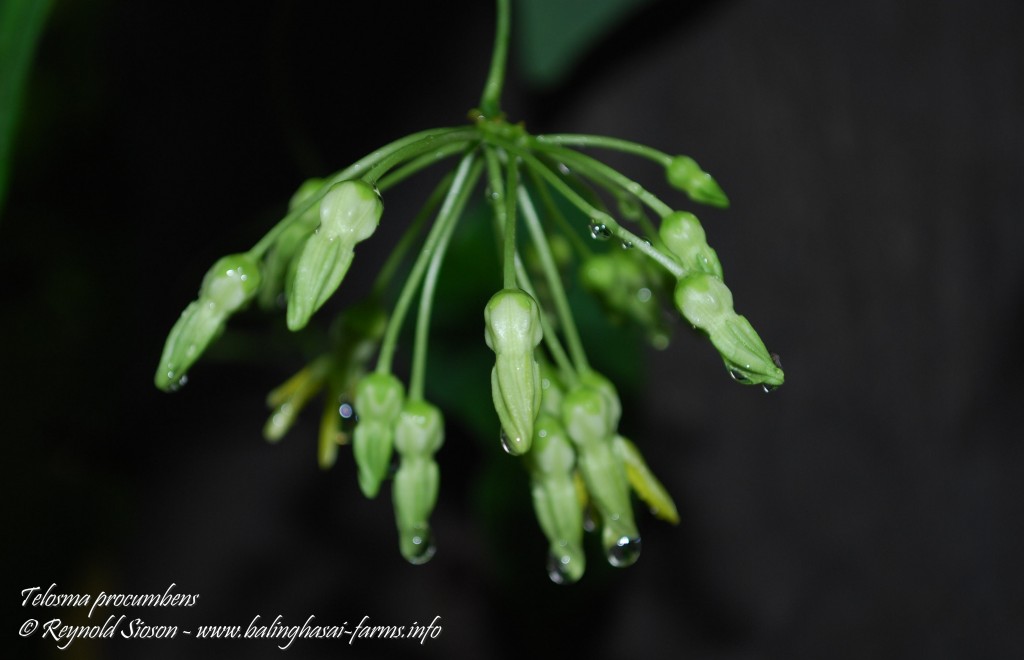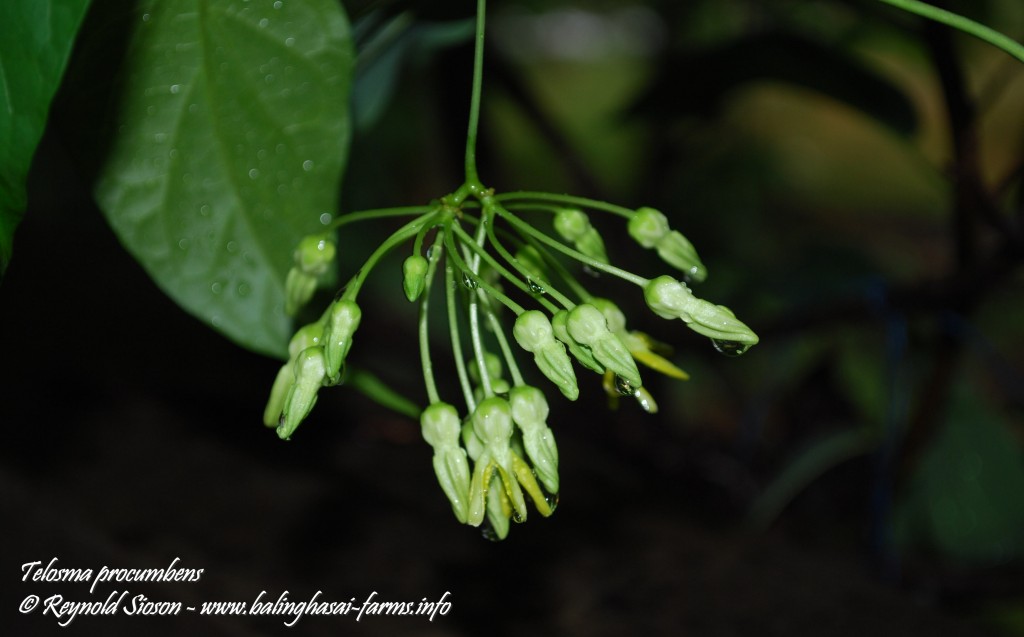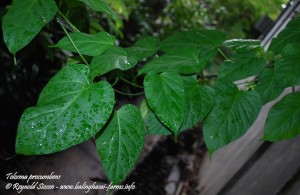Specimen : Wild shrubs and treelets
Habitat : Bamboo thickets, creek banks, open grasslands, roadsides
Local name : Bagawak, Bagawak-puti
Botanical name : Clerodendrum minahassae
Family : Lamiaceae
Leaf : Ovate; Large, crinkled, glossy deep green
Flower : Tubular, 5-parted, petals immaculate white, stamens long and reddish; Calyx crispy green with maroon apices in flowering stage, splitting into 5 and showing red in maturity or during fruiting, enlarged
Fruit : Drupe, somewhat rounded, green to bluish black,enclosed or set in reddish or maroon, 5-parted persistent calyx
Fruiting season : Fruits seen on August and Sepember
Traits : Deciduous to semi-deciduous; Drought tolerant; Shade tolerant; Small tree or large shrub; Tolerant of infertile soil; Tolerant of occasional water-logging
Recommendations : Home gardens; Nurse tree; Pioneer species for reforestation purpose; Potted; Urban greening; Wildcrafting
Used for : Leaves used in traditional medicine
Native range : Indonesia and the Philippines
National conservation status : Not threatened in the Philippines
Threat : Clearing of woodlands for agricultural, commercial or residential use
Further readings :
Bureau of Plant Industry’s Medicinal Plants Publication - Clerodendrum minahassae http://www.bpi.da.gov.ph/Publications/mp/pdf/b/bagauak-na-puti.pdf
Tropical & Subtropical Trees (M. Barwick) (632)



